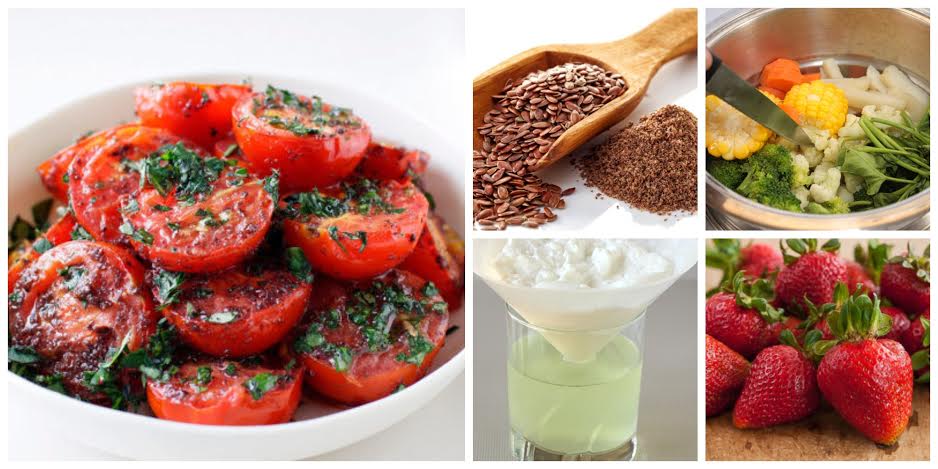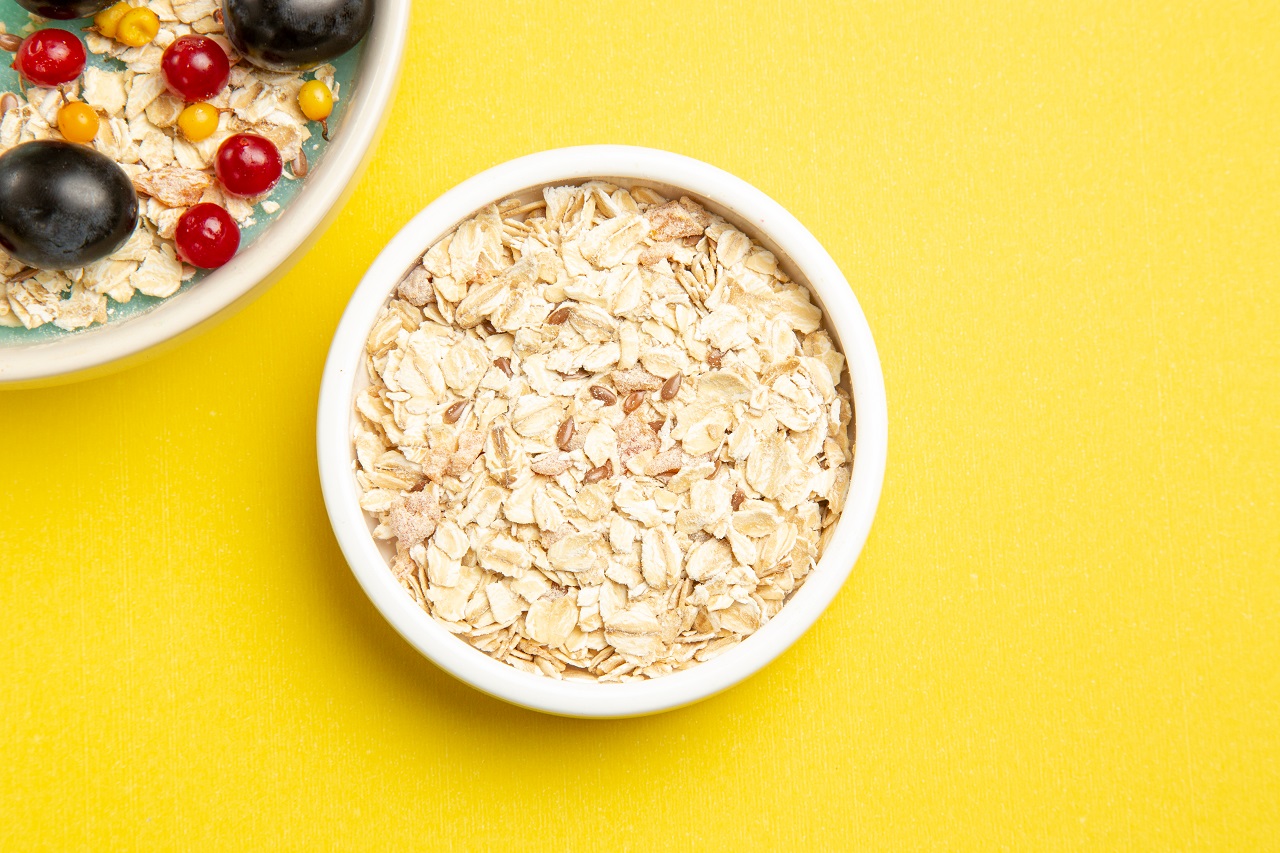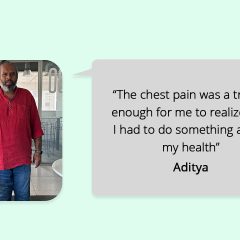 It’s that time of the year when you reconnect with your loved ones for celebrations such as singing carols, dancing and most importantly – food! As we are nearing the closure of this year, I am drowned in sweet memories of Christmas Celebrations at school and with my friends and family. It’s a time to gorge on some festive food. But, the dilemma with most is how do you gorge on food and yet keep it healthy. After pondering over it for the past few days, here are some recipes which I have planned for my Christmas and New Year Eve parties.
It’s that time of the year when you reconnect with your loved ones for celebrations such as singing carols, dancing and most importantly – food! As we are nearing the closure of this year, I am drowned in sweet memories of Christmas Celebrations at school and with my friends and family. It’s a time to gorge on some festive food. But, the dilemma with most is how do you gorge on food and yet keep it healthy. After pondering over it for the past few days, here are some recipes which I have planned for my Christmas and New Year Eve parties.
Healthy Low Fat Christmas & New Year Eve Recipes
Cauliflower and Leek soup
Ingredients:
- 1 tbsp Olive Oil
- 2 Leeks, sliced
- 1 Carrot, sliced
- 1 Onion, sliced
- 1 Cauliflower, roughly chopped
- 1 tsp Dried Basil
- Salt and Pepper to taste
Method:
- Heat the olive oil in a saucepan over medium heat. Add the leeks, carrot and onion. Stir a little and cover. Let the leeks cook till they’re soft for about 5 minutes.
- Add the cauliflower and stir to coat. Turn heat to high.
- Add a little water, basil and bring to a boil, then cover and let it simmer on low heat.
- Puree the soup with a hand blender.
- Season to taste with salt and pepper.
- A dash of nutmeg helps in stimulating taste buds.
Nutritional Value: This is a low-calorie soup that is rich in folic acid and soluble fiber. Basil and nutmeg act as super foods for immunity building.
2. Stir-fried green beans: An Accompaniment For The Soup
Ingredients:
- 100 gm Green French beans
- 1 tsp Extra Virgin Olive Oil
- Sesame Seeds
- Grounded Pepper
- Rock Salt
- Oregano
Method:
- Heat oil in a pan
- Add sesame seeds and allow them to splutter
- Add the beans and sauté
- Put some salt, pepper and cover the lid
- Cook for 5-7 mins until it’s a little soft with some of the bite remaining
- Sprinkle some oregano and serve
Nutritional Value: The best side dish that is full of fiber and protein. Also works as a low-calorie snack.
3. Chicken, Kale & Sprouts Stir Fry
Ingredients:
- 100 gm Kale
- 2 lean Chicken Breasts shredded
- 2 tsp Sesame Oil
- 1-inch Ginger shredded
- Red Pepper thinly sliced
- Handful Brussel Sprouts
- 1 tbsp low sodium Soy Sauce
- 1 Lemon juice and Lemon Zest
Method:
- Cook kale with a good splash of water for 1-2 mins until soft, yet a little crunchy. Once done, cool under running water to keep the color.
- Add half the oil and cook the chicken strips until brown, then remove and set aside.
- Heat the remaining oil and fry the ginger, pepper and sprouts until they’re a little soft.
- Add all the above together and tip in soy sauce, lime zest and juice. Serve immediately.
Nutritional Value: This dish is a good combination of lean protein and fiber. Adding ginger and lemon makes it digestive. A good recipe for a snack or salad or as a main course with some brown rice.
4. Whole Wheat Flour & Ragi Cake
How can you host a party without dessert? Ditch the calorie-laden and not so healthy maida and give a healthy twist to your cake!
Ingredients:
- Ragi Flour – 3/4 cup
- Wheat Flour – 1/4 cup + 1 tsp
- Baking Soda – 1 tsp
- Jaggery – 1/2 cup
- Palm Sugar – 1/2 cup
- Oil – 1/4 cup
- Curd – 1/tsp
- Water – 1/4 cup
- Banana – 2 (Ripe)
- Raisins – 15
- Badam – 8
- Butter – 1 tbsp
Method:
- Remove gasket and whistle of the cooker and keep it on low flame. This is to bring the preheat effect of the oven (20-25 minutes would do)
- Heat water in a saucepan and add jaggery (powdered/grated) and palm sugar and let it dissolve and filter.
- Mash the bananas and leave aside
- In a bowl, sieve both the flours together and add 1 tsp of baking soda and mix well.
- In another bowl, add the jaggery + palm sugar mixture, mashed banana, curd, oil and beat them well.
- To this, add the flour mixture and beat/mix well.
- Add the raisins and almonds and mix well.
- Grease the tin and pour the mixture
- Place a stand/plate inside the cooker and then place the cake tin.
- Close it and let it cook for 5 minutes in medium flame.
- After 5 minutes, keep the flame slow and let it cook for 30-40 minutes.
- Use a toothpick to check if the cake is completely cooked. When you prick the cake deep inside, the toothpick will come out clean when the cake is completely cooked.
Nutritional Value: Low calorie with the goodness of calcium from Ragi. Eat it guilt free!
5. Crusty Pita Bread & Chickpeas: A quick snack
Ingredients:
- Pita Bread or a Multigrain Bread
- Boiled Chickpeas
- Chopped Onions, Coriander, Green Chillies
- Lemon Zest and Lemon Juice
- Salt and Pepper to taste
- Other herb seasonings
Method:
- In a bowl mix all the above ingredients and set aside.
- Toast the pita or the multigrain bread.
- Put this mixture and have it like that or you can toast them in a sandwich.
Nutritional Value: Low-calorie, protein-rich and good carbs snack.
6. Christmas Balls
Ingredients:
- Dark chocolate
- Dry Fruits Mix (coarsely ground)
- Honey
- Sesame Seeds (for coating)
Method:
- Take a bar of dark chocolate and melt it in hot water (boil some water and keep the second bowl in hot water and put the chocolate bar)
- Put all the ingredients together, except the sesame seeds and make small balls.
- Now coat these balls with sesame seeds when still wet.
Nutritional Value: Have these with no hesitation as they are full of antioxidants and the richness of dry fruits.
We hope you enjoy these healthy Christmas and New Year Eve Recipes that will surely liven up your party. Try them out and let us know your experience in the comments below! For more healthy recipes, check out Healthy Reads or ask a GOQii Coach by subscribing for Personalised Health Coaching here.
#BeTheForce






